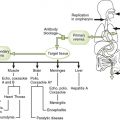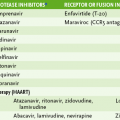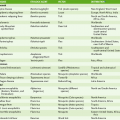Chapter 25 1. This family comprises medium-sized, bullet-shaped viruses with an enveloped, helical nucleocapsid and single-stranded (–) RNA genome. 2. Only one significant human pathogen, rabies virus, is a rhabdovirus. B Pathogenesis and disease progression (Table 25-1) 1. Rabies is a zoonotic disease, with unvaccinated domestic pets (dogs and cats) and wild skunks, raccoons (most common), and bats being the major reservoirs of the rabies virus. 2. The virus is transmitted to humans in saliva from an infected animal (via bite) or in aerosols from infected bats (via inhalation). • Rabies virions bind to acetylcholine receptors on muscle cells at the site of the bite and enter target cells by endocytosis. • The virus replicates within infected muscle cells. • The duration of the incubation phase depends on the dose of virus received and the proximity of the bite to the brain. • The virus infects peripheral nerves and travels through retrograde transport to the central nervous system (CNS). • The virus spreads from the CNS through afferent neurons to highly innervated sites (e.g., glands, skin, and eyes). • Virions are shed into saliva in the salivary glands. • Infection of the brain leads to encephalitis with seizures and hydrophobia. • Antibody response occurs only after the virus has infected the CNS and other sites, too late to prevent progression of the disease. 7. Coma and death are nearly always inevitable, unless prophylactic treatment is administered during incubation phase. 1. Rabies is diagnosed based on neurologic symptoms and history of an animal bite or contact with bats, with laboratory tests providing confirmation (Box 25-1). 2. Negri bodies (intracytoplasmic viral inclusions) are found in 70% to 90% of infected brains (animal or human). 3. Viral antigen in the CNS and brain is detectable by immunofluorescence at postmortem. 1. Preexposure vaccination of pets and high-risk personnel (veterinarians and animal handlers) is recommended. 2. Postexposure prophylaxis can prevent disease in infected people if instituted soon after exposure. • Immediate cleansing of the wound reduces viral load. • Active immunization with killed rabies vaccine is effective because of the long incubation period (>6 months). • Passive immunization with equine antirabies serum or human rabies immune globulin provides protection until antibody is produced in response to vaccine. II Other Zoonotic Enveloped (–) RNA Viruses
Small and Midsized Enveloped RNA Viruses
Small and Midsized Enveloped RNA Viruses










